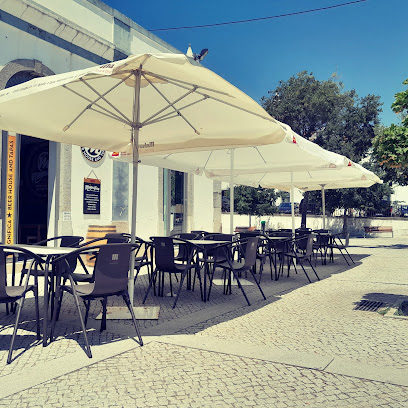
The Majestic Aqueduct of Évora: A Marvel of Engineering
Discover the Aqueduct of Évora, a breathtaking historical landmark that embodies architectural ingenuity and rich cultural heritage in Portugal.
The Aqueduct of Évora is a stunning historical landmark that showcases the impressive architectural ingenuity of the 16th century. This remarkable structure, with its towering arches and rich history, invites tourists to explore the seamless blend of beauty and engineering that defines this UNESCO World Heritage site.
A brief summary to Aqueduct
- R. do Cano 87, Evora, 7000-592, PT
Local tips
- Visit early in the morning or late afternoon for the best light and fewer crowds.
- Bring a camera to capture the stunning architecture and surrounding landscapes.
- Wear comfortable shoes, as exploring the aqueduct involves walking along uneven pathways.
- Consider joining a guided tour to learn more about the history and significance of the aqueduct.
- Check local events, as the area around the aqueduct sometimes hosts cultural activities and festivals.
Getting There
-
Car
If you are traveling by car, start your journey from Évora city center. Head northeast on Av. de Lisboa towards R. da Liberdade. Continue on N114, following signs for Estremoz. After approximately 3 km, turn right onto R. do Cano. The Aqueduct will be located at R. do Cano 87, 7000-592 Évora. There is usually street parking available nearby, but be sure to check for any parking restrictions.
-
Public Transportation
For those using public transport, you can take a bus from Évora Bus Station to R. do Cano. Buses run frequently, and the journey takes about 15 minutes. Alight at the stop closest to R. do Cano, which is a short walk from the Aqueduct. Be sure to check the bus schedule in advance as timings may vary, especially on weekends.
-
Walking
If you are already in Évora and prefer to walk, start from the main square (Praça do Giraldo). Head south on R. de Serpa Pinto, then turn left onto R. do Cano. The Aqueduct will be about a 15-minute walk from the square. This route is straightforward and allows you to enjoy the beautiful streets of Évora along the way.
Discover more about Aqueduct
Iconic landmarks you can’t miss
Porta Velha da Lagoa
0.1 km
Discover the enchanting Porta Velha da Lagoa in Évora, a historical castle that highlights the rich heritage and architectural splendor of Portugal.
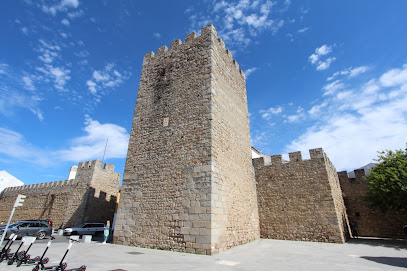
Taberna Típica Quarta-feira
0.4 km
Discover the authentic flavors of Portugal at Taberna Típica Quarta-feira in Évora, where traditional dishes and a warm ambiance await.

Largo Luiz de Camões
0.4 km
Discover the charm of Largo Luiz de Camões in Évora, Portugal—a vibrant square filled with history, culture, and local life.
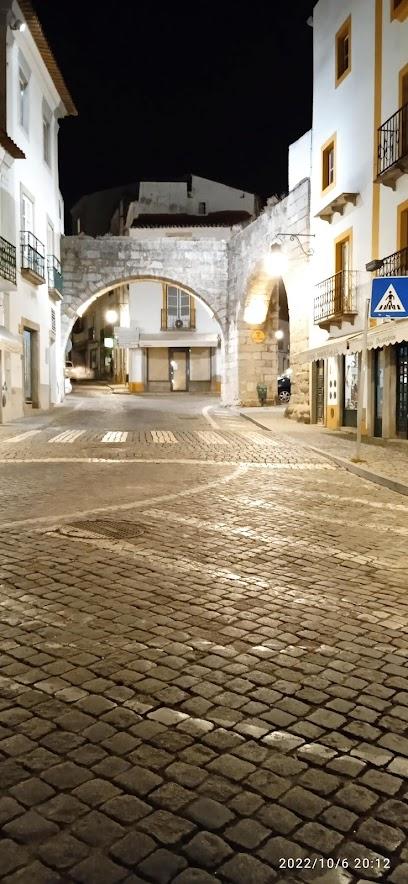
Évora_27 Capital Europeia da Cultura
0.4 km
Explore the rich cultural tapestry of Évora, Portugal's historical gem, where ancient architecture and vibrant traditions await every traveler.

Estação elevatória de Évora
0.5 km
Explore the Elevator Station of Évora, a historical landmark blending rich culture with stunning views in the heart of this UNESCO World Heritage site.
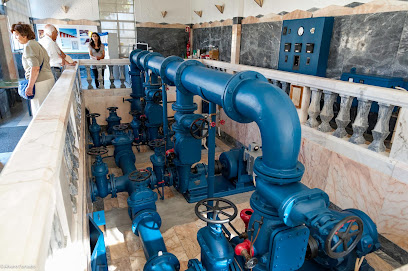
Church of Saint Mamede
0.5 km
Discover the tranquil beauty and rich history of the Church of Saint Mamede in Évora, a stunning example of Catholic architecture and cultural heritage.
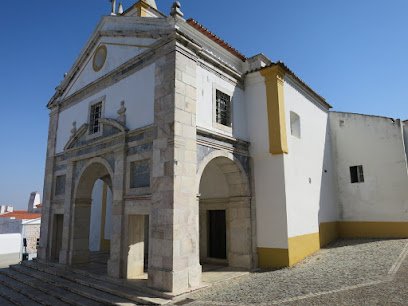
Torre de Sisebuto
0.5 km
Discover the historical charm of Torre de Sisebuto in Évora, a captivating landmark that reflects Portugal's rich architectural heritage.
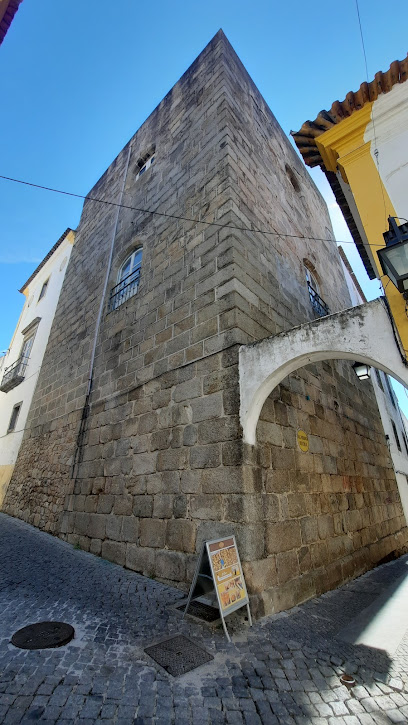
Igreja dos Lóios / Convento dos Lóios em Évora
0.6 km
Explore the stunning Igreja dos Lóios in Évora, a masterpiece of Manueline architecture, rich in history and spiritual beauty.
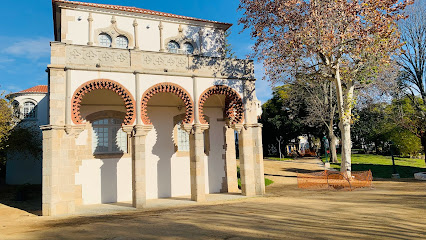
Genuine Alentejo - Portugal's Remarkable Tourist Experiences
0.6 km
Explore Alentejo's rich history, stunning landscapes, and exquisite local cuisine in the heart of Portugal's vibrant culture.

Largo dos Mercadores
0.6 km
Discover the historical charm of Largo dos Mercadores, a vibrant square in Évora showcasing Portugal's rich heritage and lively market culture.
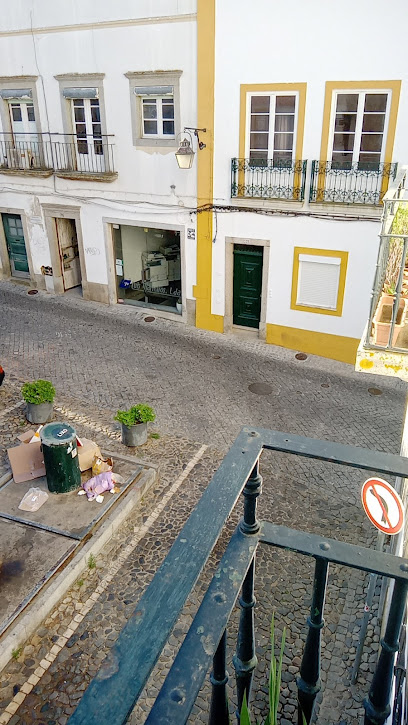
História de Évora (Coluna)
0.9 km
Discover the História de Évora (Coluna), a stunning sculpture narrating the historical tales of Évora amidst a vibrant cultural backdrop.
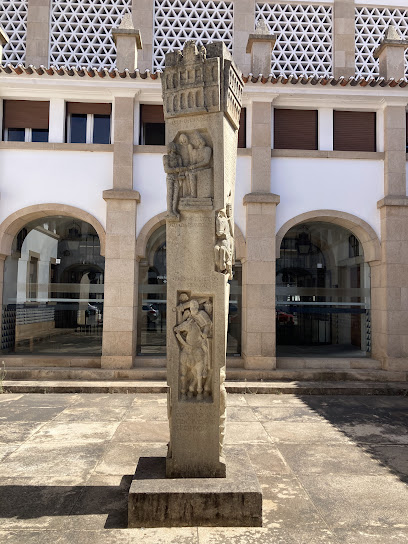
Museu de Évora - Núcleo de Arte Sacra da Igreja das Mercês
0.9 km
Discover the exquisite collections of sacred art at Museu de Évora, a must-visit museum in Portugal showcasing the rich history of religious craftsmanship.
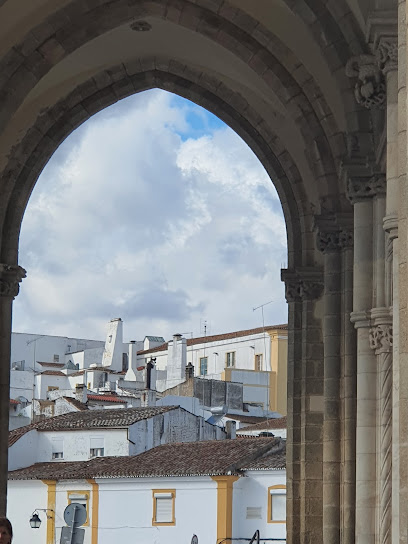
Fonte das Portas de Moura
0.9 km
Explore Évora's historic Fonte das Portas de Moura, a stunning fountain that showcases the city's rich heritage and architectural beauty.
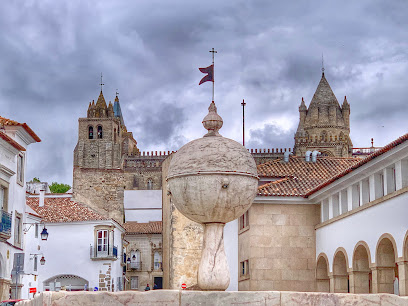
Porta do Raimundo
0.9 km
Explore the enchanting Porta do Raimundo, a historical landmark in Évora, Portugal, showcasing exquisite architecture and rich cultural heritage.

Ruínas Fingidas
0.9 km
Explore the ancient wonders of Ruínas Fingidas in Évora, a captivating historical landmark perfect for history enthusiasts and nature lovers alike.
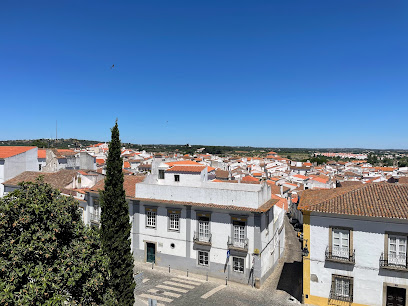
Unmissable attractions to see
Casas encastradas
0.0 km
Explore the architectural marvels of Casas Encastradas in Évora, where history meets creativity in stunning fitted houses.
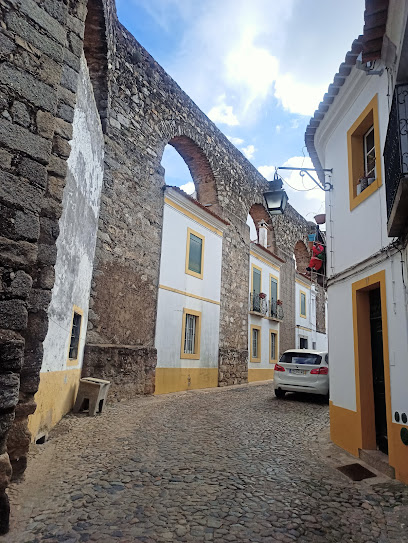
Casa do Montado
0.3 km
Explore the captivating world of cork at Casa do Montado in Évora, where tradition meets sustainability in a charming museum experience.
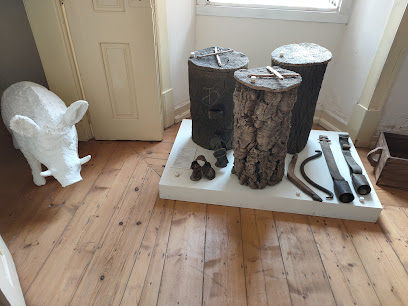
Muralhas de Évora
0.3 km
Explore the historic Muralhas de Évora, an ancient fortress that tells the story of Portugal's past while offering stunning views and charming pathways.

Ruínas da Ermida de São Bartolomeu
0.3 km
Explore the enchanting Ruínas da Ermida de São Bartolomeu in Évora, a historical site steeped in cultural significance and natural beauty.
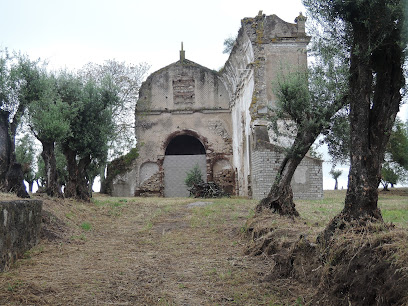
Porta nova
0.4 km
Explore Porta Nova, the iconic historical landmark of Évora, where history, culture, and stunning architecture converge in a captivating experience.
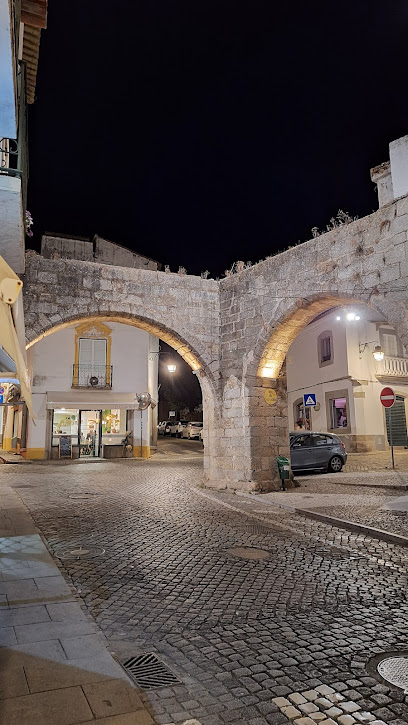
Arco Romano de Dona Isabel
0.4 km
Explore the Arco Romano de Dona Isabel, a stunning historical landmark in Évora that reflects the city's rich Roman heritage and architectural beauty.
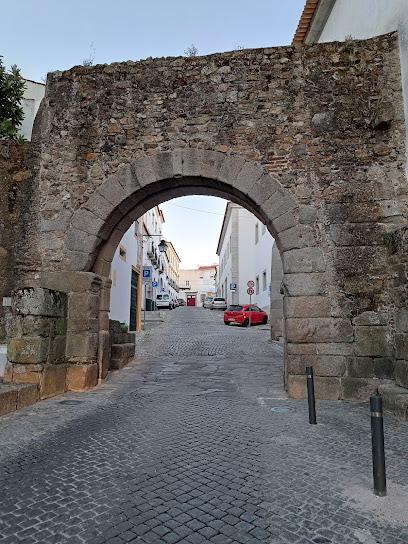
Miradouro do Jardim Diana
0.5 km
Discover the panoramic beauty of Évora from Miradouro do Jardim Diana, an enchanting observation deck surrounded by lush gardens and historic charm.
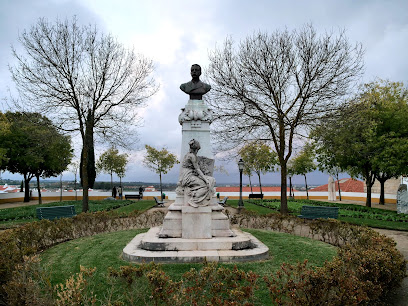
Torre das Cinco Quinas
0.5 km
Explore the historical charm of Torre das Cinco Quinas, a must-visit landmark in Évora, showcasing Portugal's rich medieval heritage and breathtaking views.
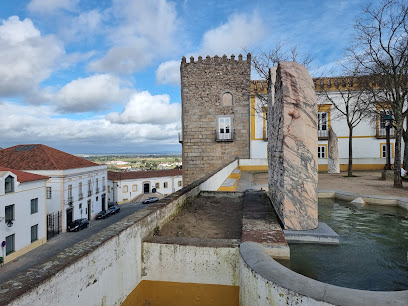
Convento de Santa Clara
0.5 km
Explore the serene Convento de Santa Clara in Évora, a historical gem showcasing beautiful architecture and a tranquil atmosphere.
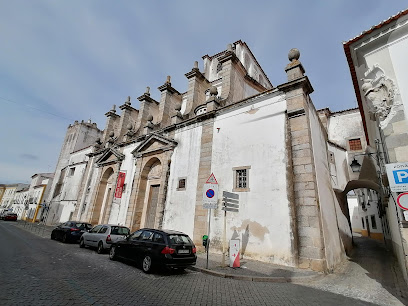
Centro Histórico de Évora
0.5 km
Visit Centro Histórico de Évora to experience Portugal's rich history, stunning architecture, and vibrant cultural scene in a UNESCO World Heritage site.
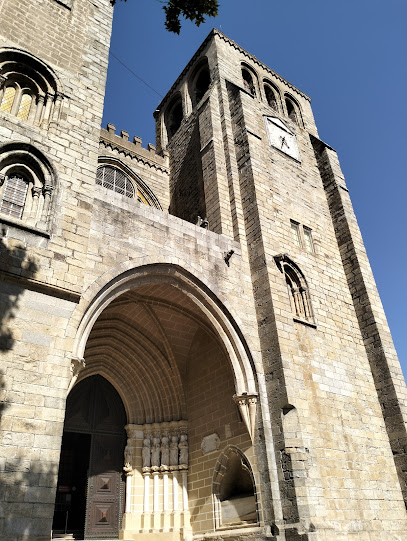
Cadaval Palace
0.5 km
Explore Cadaval Palace, a cultural gem in Évora, blending history, art, and exquisite dining in a breathtaking setting.
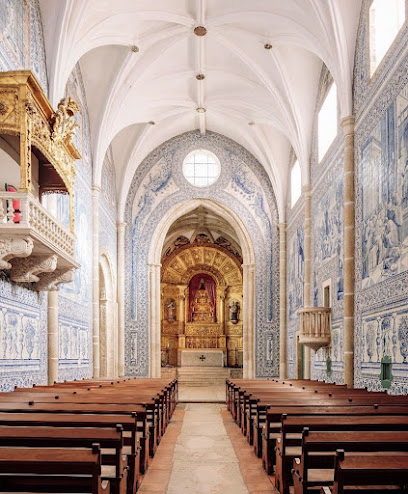
Igreja de São Tiago
0.5 km
Experience the serene beauty and historical significance of Igreja de São Tiago in Évora, a must-visit Catholic church and tourist attraction.
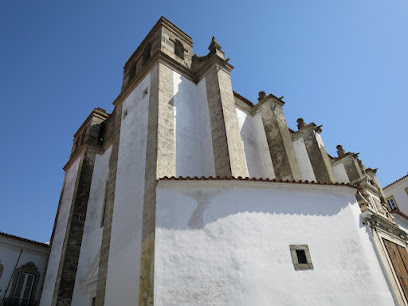
Caixa de Água da Rua Nova
0.5 km
Discover the architectural gem of Caixa de Água da Rua Nova in Évora, where history and beauty converge in a breathtaking tourist attraction.
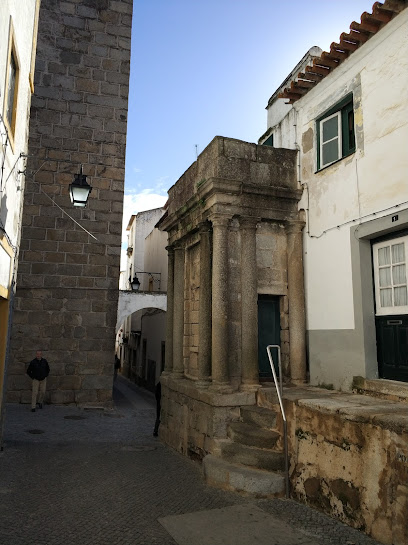
Clock Museum - Pole Évora
0.6 km
Explore the fascinating world of horology at Évora's Clock Museum, a unique tourist attraction showcasing exquisite timepieces and their histories.

Santo Antão Church
0.6 km
Discover the serene beauty and rich history of Santo Antão Church, a must-visit Catholic church in the heart of Évora, Portugal.

Essential places to dine
Degust'Ar
0.1 km
Experience authentic Portuguese cuisine at Degust'Ar in Évora - where tradition meets innovation in every delicious dish.

Tasquinha do Oliveira
0.2 km
Discover authentic Portuguese flavors at Tasquinha do Oliveira in Évora - a must-visit culinary destination for every traveler.
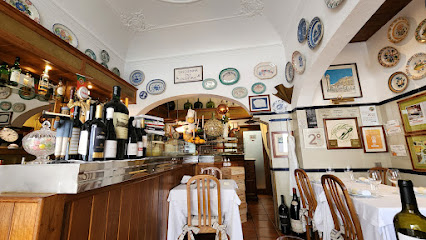
O Trovador
0.2 km
Experience authentic Portuguese flavors at O Trovador in Évora - where tradition meets culinary excellence.
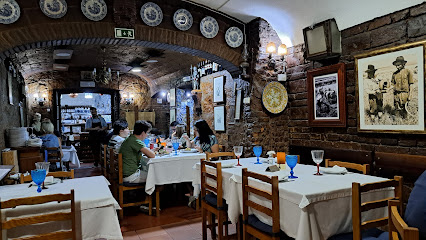
O Templo
0.2 km
Discover authentic Portuguese flavors at O Templo in Évora – a cozy restaurant known for its traditional dishes and welcoming atmosphere.
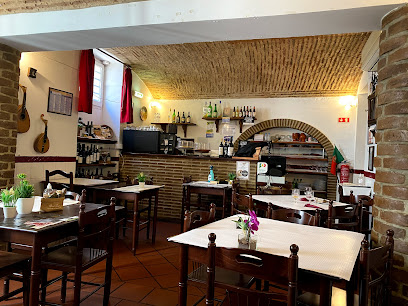
Bistro Barão
0.2 km
Experience authentic Portuguese cuisine at Bistro Barão in Évora - where tradition meets flavor in a cozy setting.
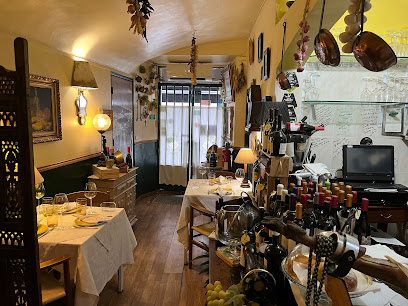
Le Coeur Bistro
0.2 km
Discover the rich flavors of Portugal at Le Coeur Bistro in Évora, where every dish tells a story.
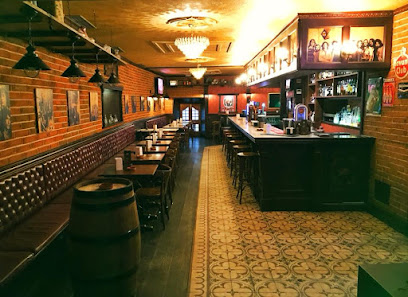
Fialho
0.2 km
Discover Fialho: A Culinary Haven in Évora Offering Authentic Alentejo Flavors and Unforgettable Dining Experiences.
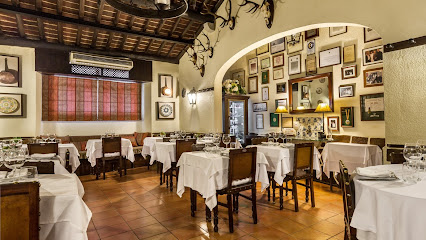
Restaurante Cozinha da Catarina
0.3 km
Experience authentic Portuguese cuisine at Restaurante Cozinha da Catarina in Évora - where tradition meets flavor.
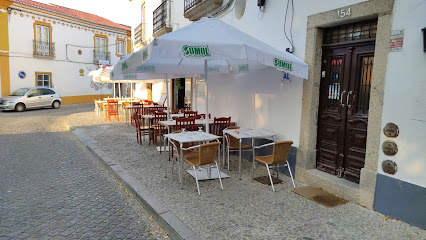
Restaurante 1/4 pras 9
0.3 km
Discover authentic Portuguese flavors at Restaurante 1/4 pras 9 in Évora - where tradition meets taste.
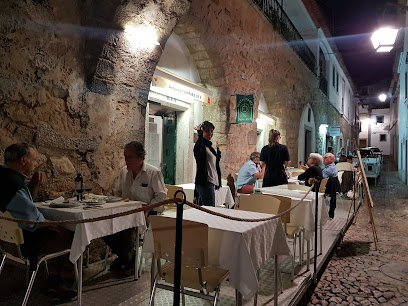
Botequim da Mouraria
0.4 km
Experience authentic Portuguese cuisine at Botequim da Mouraria in Évora – where tradition meets flavor in every dish.
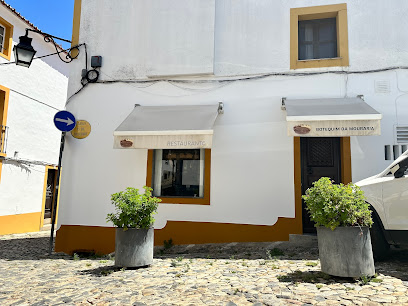
SBO Sabores e Livros
0.4 km
Experience the perfect blend of Japanese cuisine and literature at SBO Sabores e Livros in Évora—where every meal tells a story.
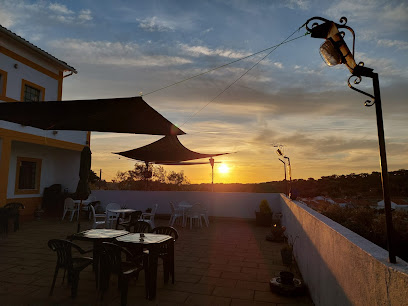
9 da Praça
0.5 km
Experience authentic Mediterranean cuisine at 9 da Praça in Évora - where tradition meets taste in every dish.
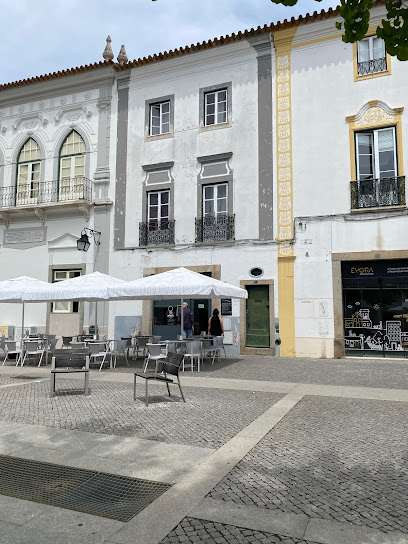
O Antão
0.5 km
Experience authentic Portuguese cuisine at O Antão in Évora – where tradition meets flavor in a welcoming atmosphere.
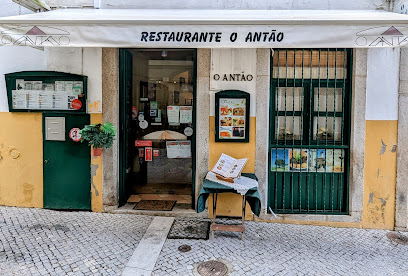
Dom Joaquim
0.5 km
Discover the heart of Portuguese cuisine at Dom Joaquim, Évora's premier destination for authentic flavors and warm hospitality.

Híbrido
0.6 km
Discover Híbrido in Évora: where traditional Portuguese flavors meet innovative culinary artistry in a warm and inviting atmosphere.
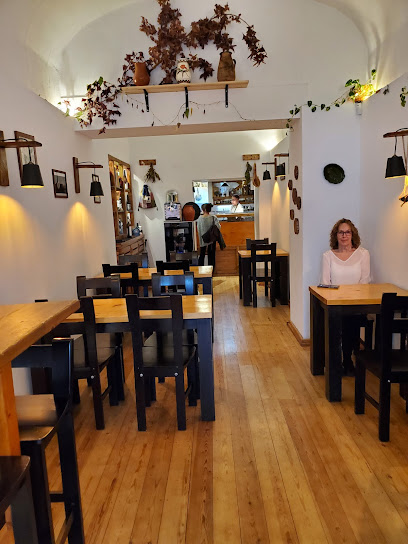
Markets, malls and hidden boutiques
MetAlentejo Venda De Natal
0.2 km
Explore authentic Portuguese fashion and artisanal clothing at MetAlentejo Venda De Natal in Évora, a perfect stop for unique souvenirs and stylish finds.
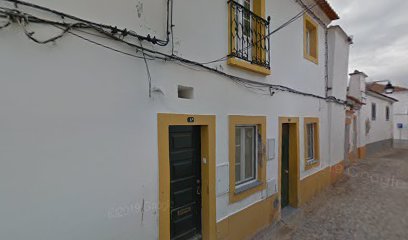
100mlStore Evora
0.2 km
Explore the exquisite world of beauty at 100mlStore in Évora, where quality cosmetics meet historic charm.
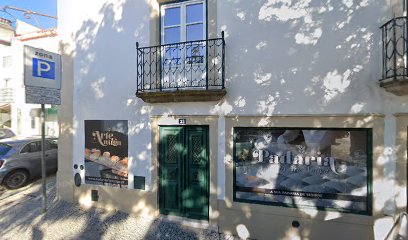
YEBORATH ® Design & Gift Shop
0.3 km
Explore YEBORATH® Design & Gift Shop in Évora for unique custom t-shirts and local gifts that capture the essence of your travels.

Equivalenza Évora
0.3 km
Explore a fragrant paradise at Equivalenza Évora, where tradition meets modernity in a stunning perfume store.

AMOne Roupa de Senhora
0.3 km
Explore unique fashion at AMOne Roupa de Senhora, a charming clothing store in Évora, perfect for stylish souvenirs.
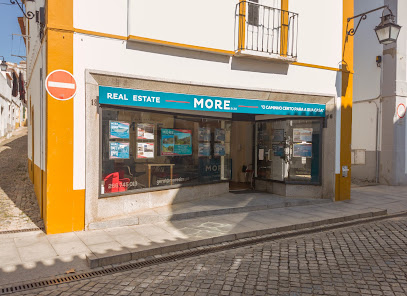
Retrosaria Da Moda
0.3 km
Discover the essence of children's fashion at Retrosaria Da Moda, where unique styles meet local Portuguese craftsmanship.
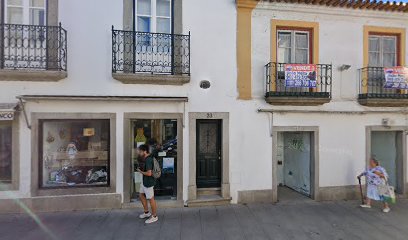
Loja Chinesa
0.3 km
Immerse yourself in the vibrant culture of Évora at Loja Chinesa, a treasure trove of unique artifacts and local crafts.
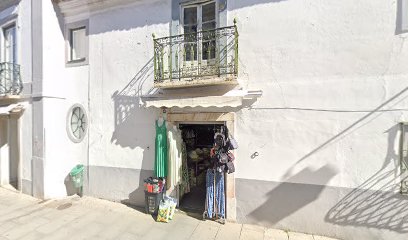
Modévora
0.4 km
Explore the stylish offerings at Modévora, Évora's premier clothing store, blending contemporary fashion with local charm.
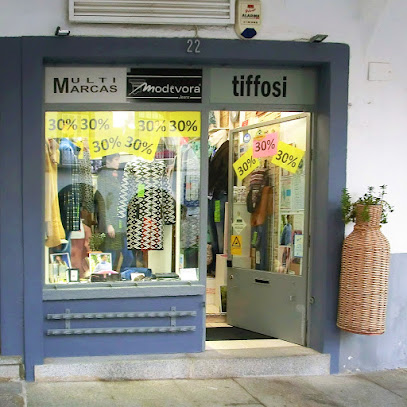
Pepe Jeans Evora
0.4 km
Discover stylish men's and women's fashion at Pepe Jeans Évora, where modern trends meet quality craftsmanship in a vibrant shopping atmosphere.

Pull and Bear
0.4 km
Explore trendy fashion at Pull and Bear in Évora, offering stylish clothing for men and women in a vibrant shopping atmosphere.
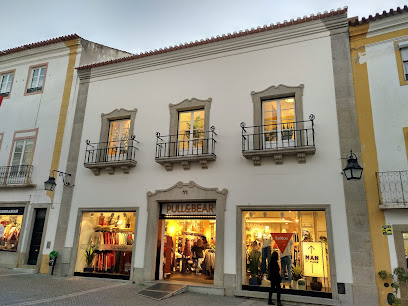
Casa Quadrado - Gonçalves & Escaja, Lda
0.4 km
Discover unique fashion treasures at Casa Quadrado, Évora's charming clothing store blending contemporary style with Portuguese heritage.
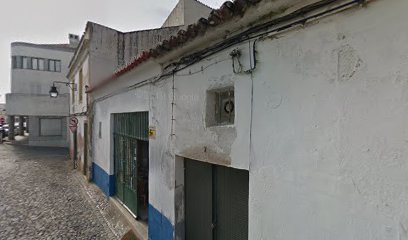
Jirau Handcraft Goods
0.4 km
Discover the artistry of Évora at Jirau Handcraft Goods, where unique ceramics and handcrafted treasures await every discerning traveler.
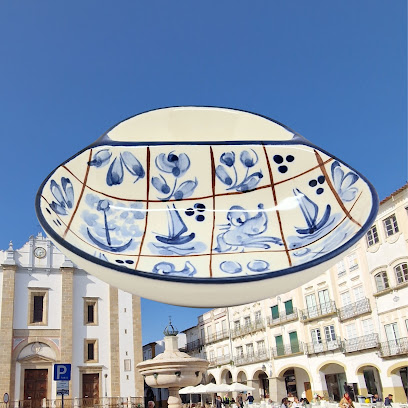
TRB Loja Vintage
0.4 km
Explore vintage fashion treasures at TRB Loja Vintage in Évora, where every garment has a story to tell.
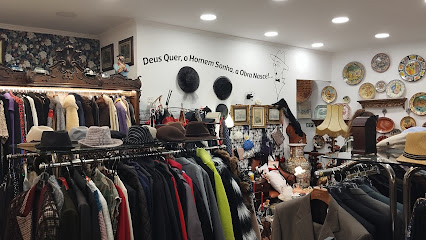
Casa Finita
0.5 km
Discover unique fashion at Casa Finita, Évora's charming clothing store offering a blend of local designs and contemporary styles.

ALE-HOP Évora
0.5 km
Explore ALE-HOP Évora for unique gifts and vibrant local crafts that capture the playful spirit of this historic city.
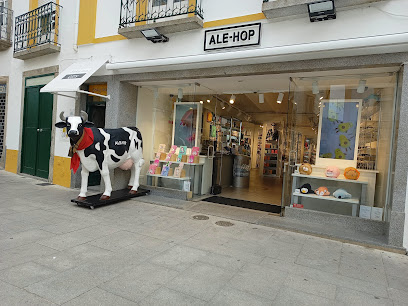
Essential bars & hidden hideouts
ADC Wine & Food Bar
0.2 km
Experience the best of Évora's culinary scene at ADC Wine & Food Bar, where local wines and flavors come together in a cozy setting.
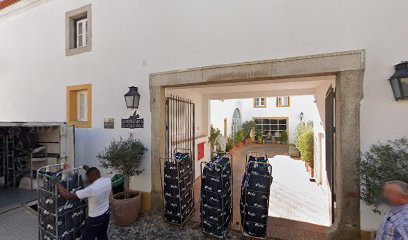
Aqui Há Gato
0.2 km
Experience the vibrant nightlife of Évora at Aqui Há Gato, a lively bar offering diverse drinks, great music, and a welcoming atmosphere.
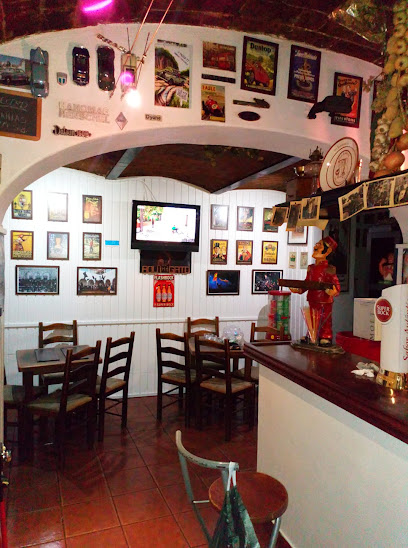
Pub Molhóbico
0.2 km
Discover the lively ambiance and eclectic menu at Pub Molhóbico in Évora, where local culture meets modern dining.
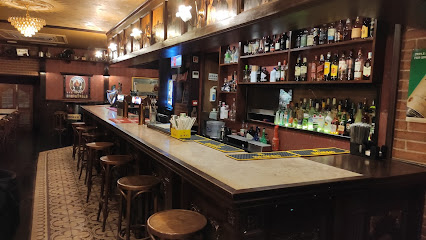
Bar Culpa Tua
0.3 km
Experience the lively atmosphere and local flavors at Bar Culpa Tua in Évora, where nightlife comes alive with every sip.
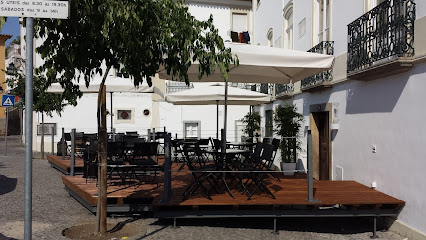
Bar A Mandrágora
0.4 km
Discover the vibrant nightlife of Évora at Bar A Mandrágora, where exquisite drinks and a lively atmosphere await you.
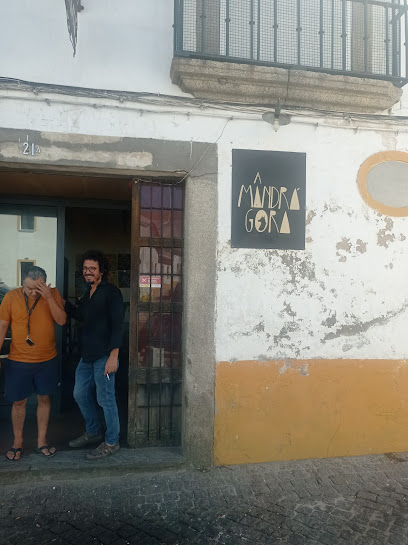
Bar Real Club
0.6 km
Discover the vibrant nightlife of Évora at Bar Real Club – a local hotspot for music, drinks, and unforgettable experiences.

Oficina - Bar
0.6 km
Experience the vibrant nightlife of Évora at Oficina, a cozy bar offering creative cocktails and a welcoming atmosphere for all.
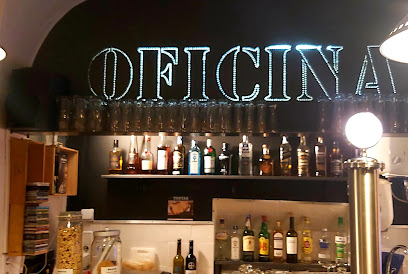
Bar Bardamoeda
0.6 km
Experience the vibrant atmosphere and delicious flavors of Bar Bardamoeda, a must-visit gastropub in Évora, Portugal.
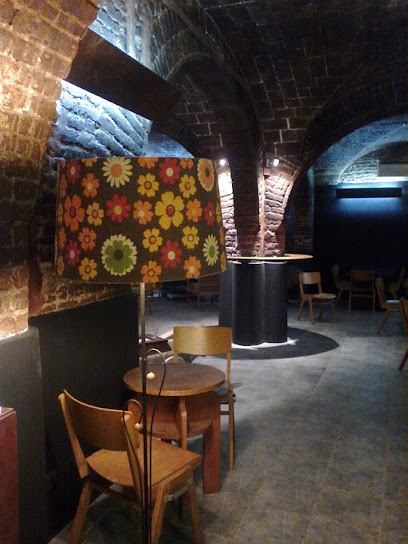
Piparoza boutique bar
0.7 km
Discover the charm of Évora at Piparoza Boutique Bar, where local flavors meet a contemporary dining experience surrounded by vibrant culture.
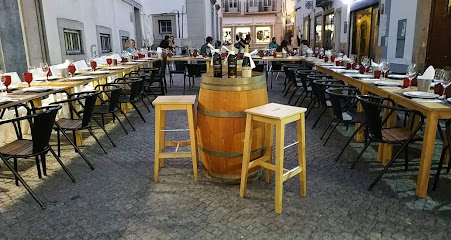
BarUe
0.7 km
Experience the vibrant nightlife of Évora at BarUe, a lively bar with a welcoming atmosphere and a great selection of drinks.
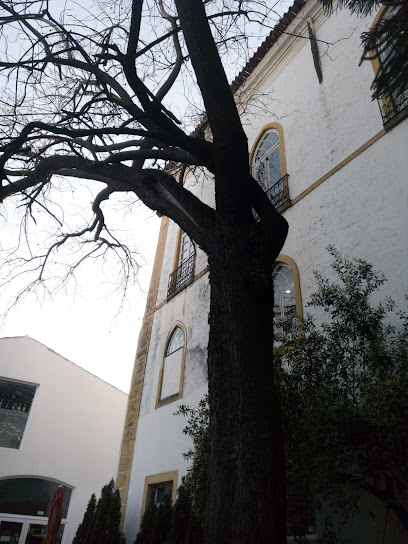
Feito ao Bife
0.7 km
Discover the rich flavors of Portugal at Feito ao Bife, a charming bar and restaurant in Évora dedicated to excellent cuisine and warm hospitality.
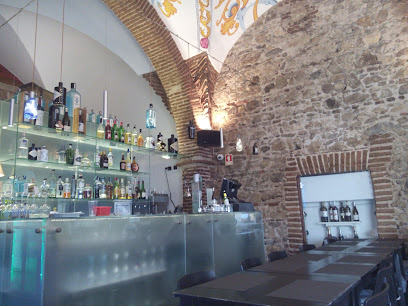
Bar O Tunnel
0.7 km
Discover the authentic flavors of Portugal at Bar O Tunnel in Évora, where friendly service meets delicious local cuisine.
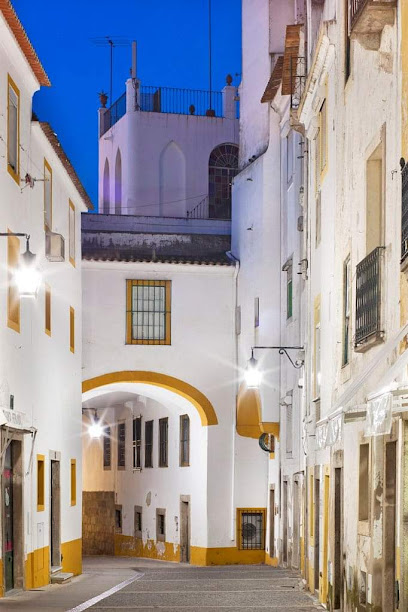
Cafe Estrela d'Ouro
0.7 km
Discover the vibrant atmosphere and local charm of Cafe Estrela d'Ouro, Évora's top bar for unforgettable drinks and delightful company.
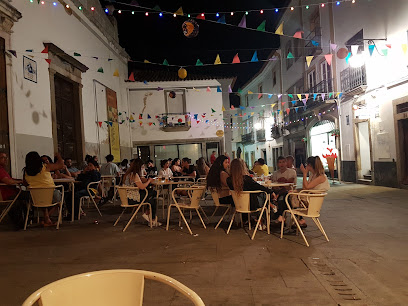
Clube/Bar 6 Tetos
0.8 km
Discover the lively atmosphere and great drinks at Clube/Bar 6 Tetos, Évora's go-to spot for nightlife and pool fun.
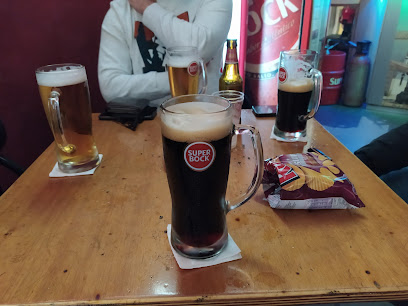
Magnífica Cerveja Artesanal do Alentejo / Beer house & Tapas
0.9 km
Experience the best of Alentejo's craft beer and tapas in a vibrant brewpub atmosphere at Magnífica Cerveja Artesanal.
